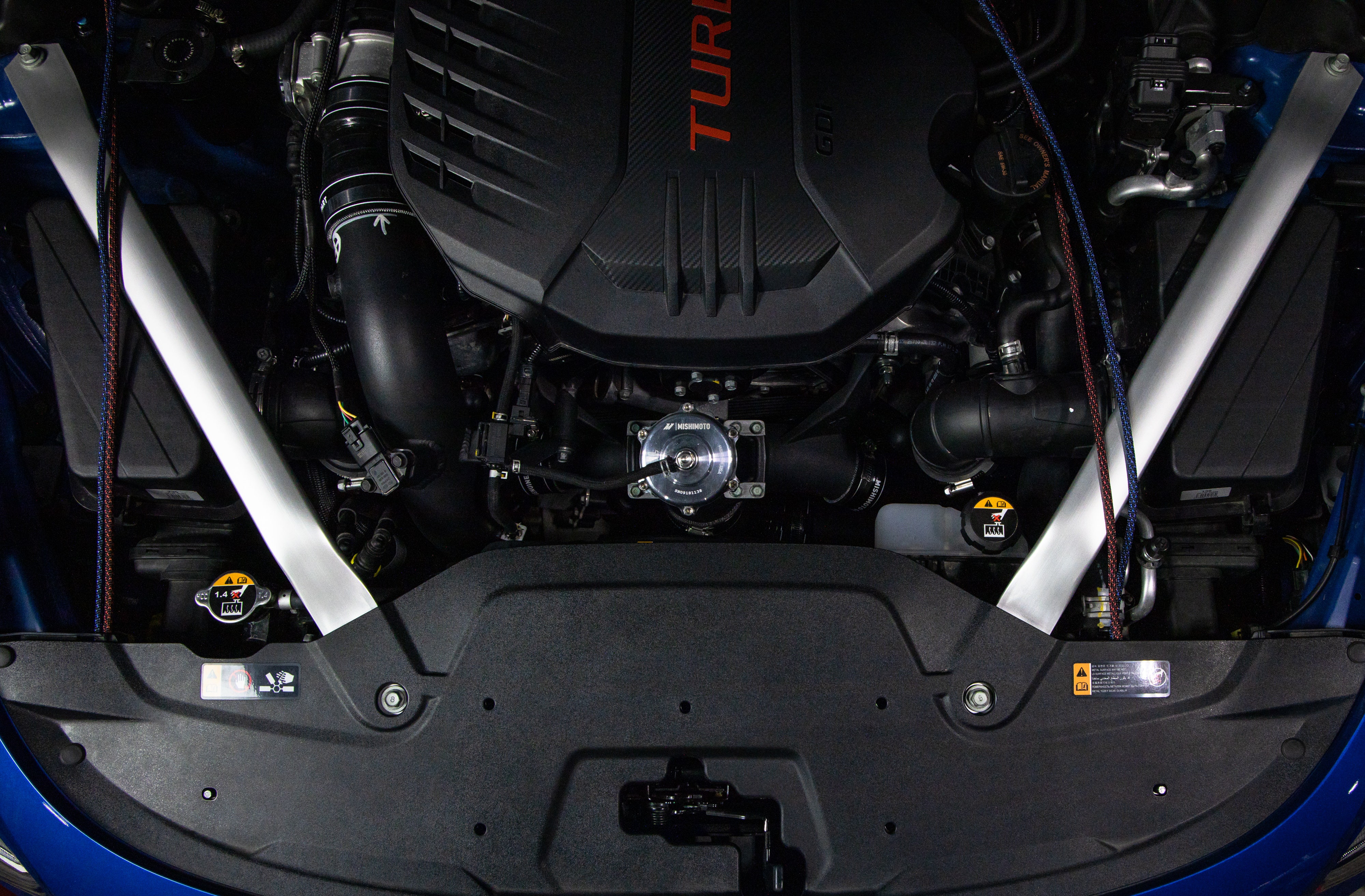
It Started out with a PSSHT - Blow-Off Valve Technical Article
The turbocharger system is one of the most beautiful soundscapes in the automotive world. This overgrown mechanical snail not only gives smaller, more efficient engines the extra pep in their step, but it also fills our ears with a symphony of whirrs, flutters, and hisses, all complemented by the bassy undertone of the exhaust. Each section of the turbocharged orchestra plays its part, but today we're going to look at the 'Hiss' section, with the blow-off valve sitting in first chair.
What is a Blow-Off Valve?
When it comes to your vehicle's turbo system, there's more to your blow-off valve than meets the ear. A blow-off valve (BOV), or recirculation valve that many OEM systems come equipped with, is in essence, a pressure relief valve specifically for excess boost in the system. Why does this extra boost pressure need to be released? I'm glad you asked! The purpose of this valve is primarily to protect against what's known as closed-throttle compressor surge.
Closed-throttle compressor surge is that characteristic "STUSTUSTU" sound that you hear on some vehicles right after you let off the throttle. When you're on throttle and the turbo is generating boost, the plate of the engine's throttle body is open allowing all of that pressure to pass into the intake manifold. However, as you let off the throttle, that plate snaps closed, and without a valve, there's nowhere for that pressure to go, so it makes a B-line back toward the turbo compressor.
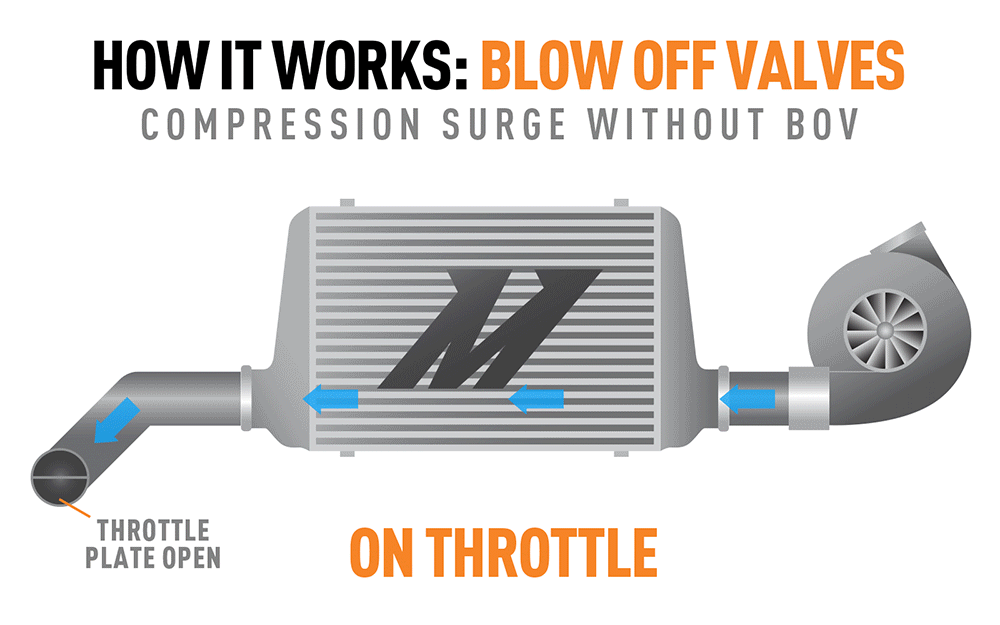
Why is this a bad thing? I'm glad you asked! The short answer is that your turbo is not in imminent danger when off throttle. Compressor surge while on throttle is a more serious issue, and indicates that you're asking too much from your turbo setup.
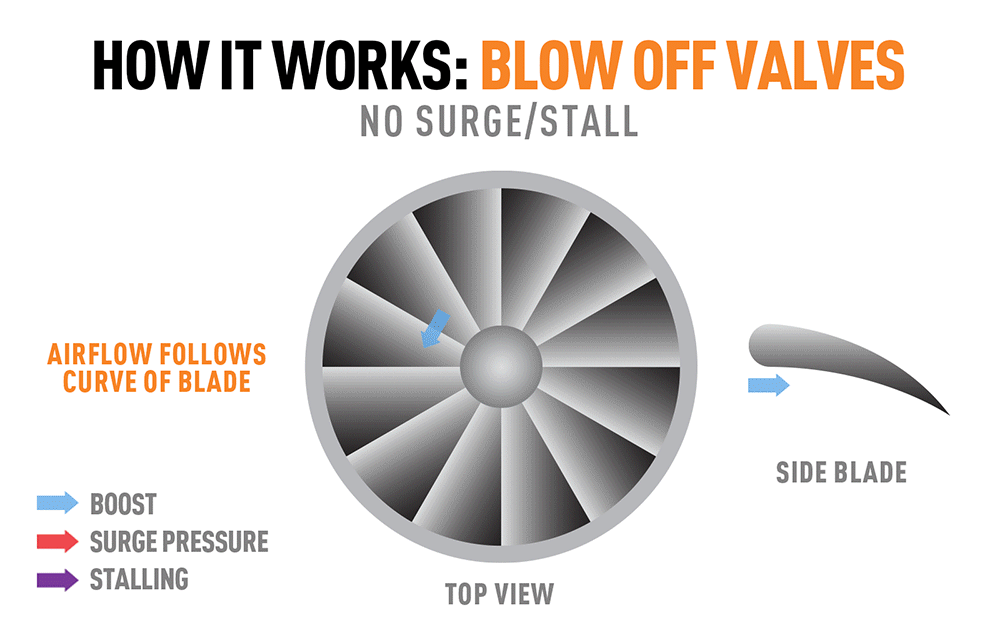
The sound you're hearing is the compressor stalling, but not in the sense of stopping. Given that these blades are spinning at insane RPMs, it would be nearly impossible for them to stop dead. We're referring to stalling in the aeronautical sense, where the airflow is no longer flowing along the curve of the turbine blades. The air gets chopped up, hence the chuckle, which can slow the turbine enough to cause a bit of lag once you're back on throttle. Prolonged exposure to these surges can also cause extra wear on your turbo meaning that you'd be replacing it sooner than expected.
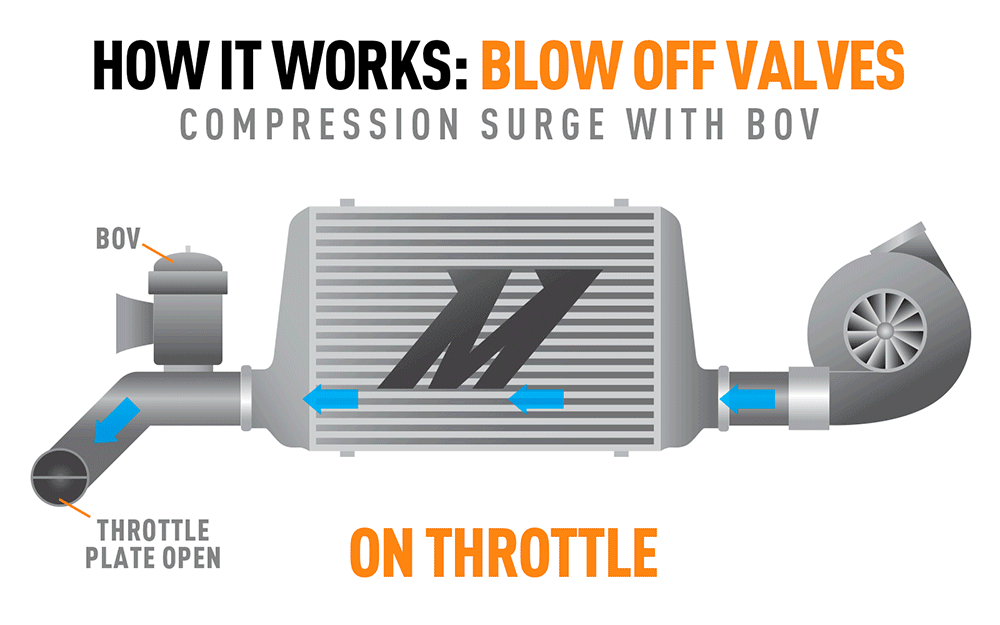
How Does at BOV work?
The operation of the blow-off valve is fairly simple, yet a little more complex than you would think. When it comes to the innards of a standard BOV, there's essentially only one moving part, along with a pre-load spring inside. It's a common misconception that the pre-load spring is the primary 'keeper of the gate' if you will, when it comes to holding the piston in place. These springs are usually only rated to a few PSI and can be changed depending on the amount of boost running through the system since their job is to keep the piston in place at idle, and snap it back closed between actuations.
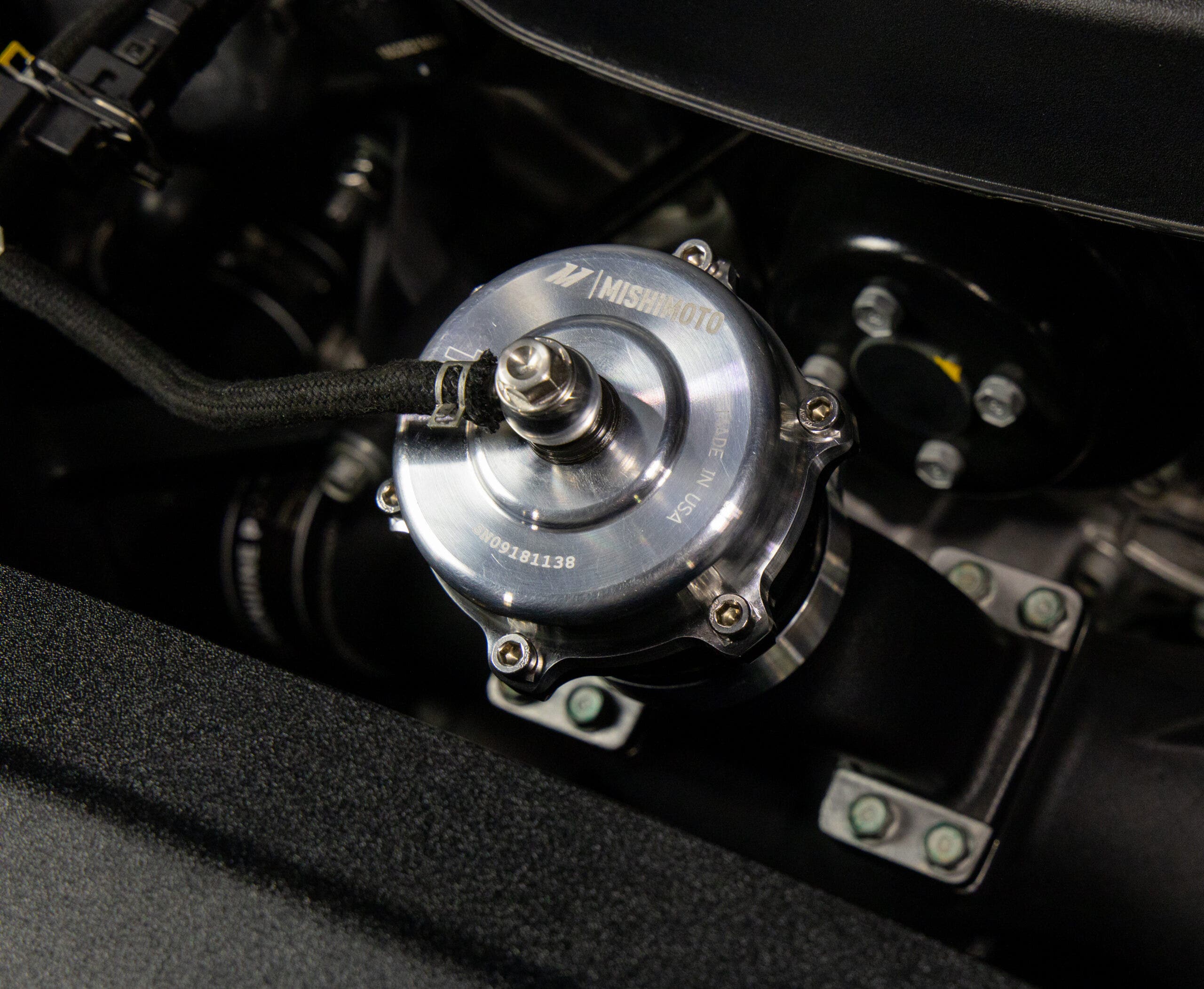
You might have taken notice of a small inlet on one side of the typical BOV design. This is where pressure from the intake manifold is channeled through. Since even a stock turbo can easily produce enough pressure to overcome the pre-load spring, the BOV needs some extra help with maintaining the seal. So, pressure from the intake manifold is funneled into the back of the piston to create an equilibrium and hold the piston in place.
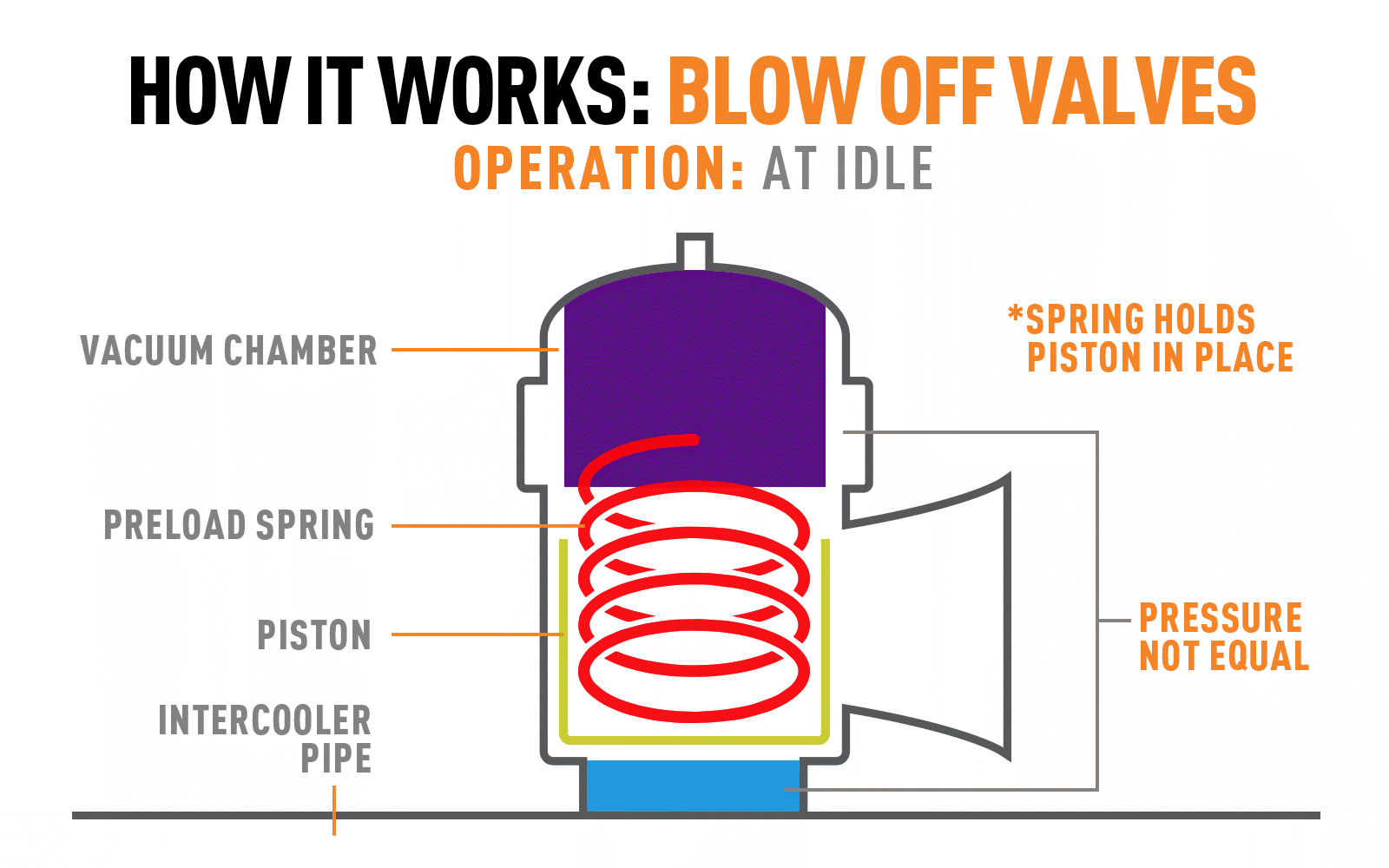
Once off throttle, it's the BOV's time to shine and relieve the excess boost pressure flowing through the system. In order to actuate the piston, the upper section that was originally filled with manifold pressure is now under vacuum, giving the positive pressure a weak point to exploit in the name of protecting your turbo. Words however can only describe it so much, so we made sure to prepare a visual for you.
Why and When Should I Upgrade?
The short answer for when is once you start increasing the boost pressure past the factory limits, or especially if you're going from naturally aspirated to forced induction. While most manufacturers do tend to over-engineer certain parts, recirculation valves can be a potential leak point. Couple that with the fact that these valves are calibrated for the OEM pressure rating, they could also potentially not be relieving all of the excess boost, or remaining open too long. Generally speaking, it's always a safe bet to upgrade your blow-off or recirculation valve once you start increasing the pressure.
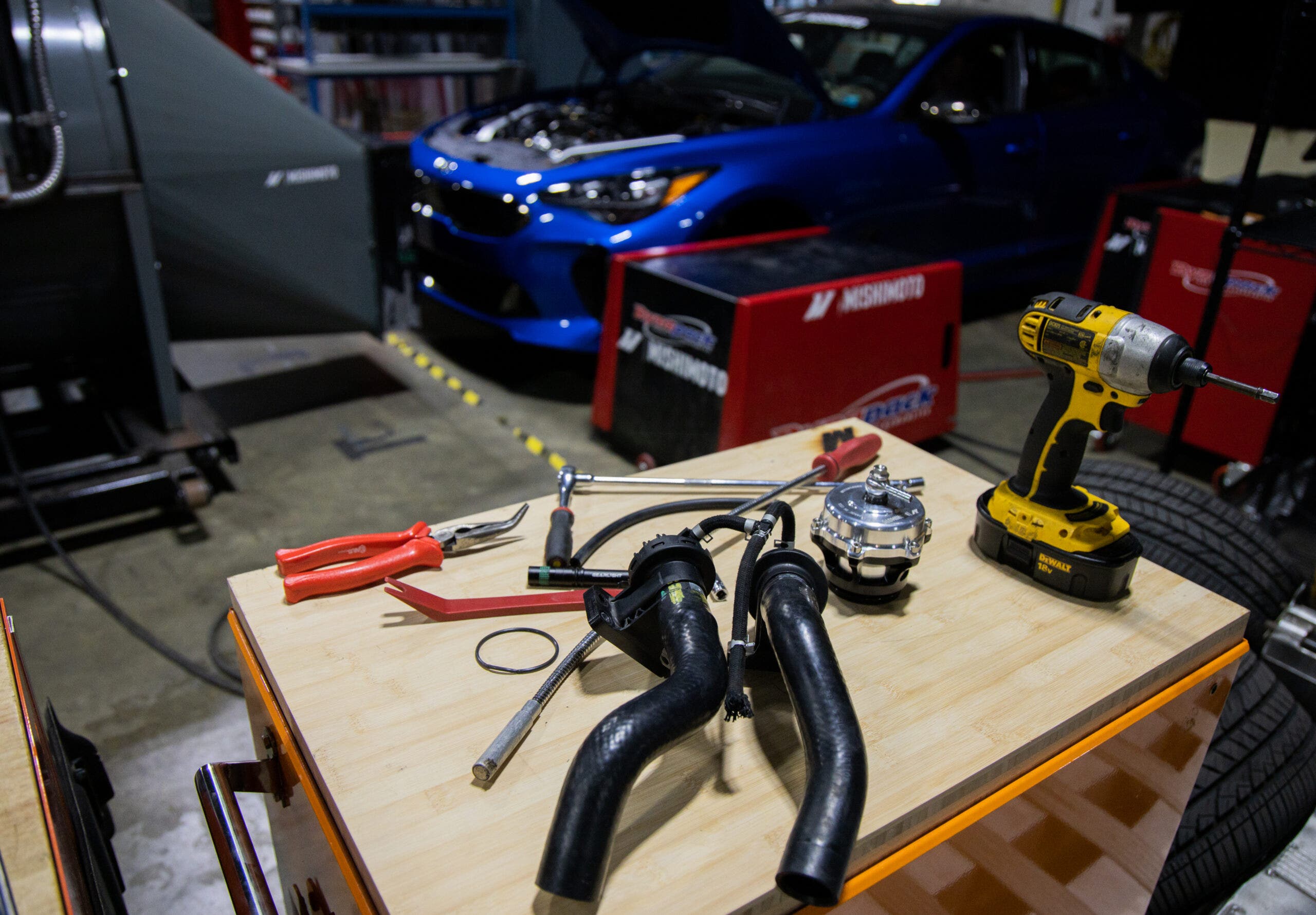
When it comes to upgrading, selecting the right valve for your setup is just as important. For starters, should you vent to atmosphere or recirculate? This could depend on your vehicle's tuning setup. It's recommended that MAF-based vehicles utilize the recirculation method on their vehicles, especially those modified for high fuel input. Not recycling this pressure can cause the vehicle to run very rich on shifts or while off throttle, and in extreme cases clean the oil from the cylinder walls. If you're still looking for that satisfying, 'PHSST' sound, there are plenty of hybrid options, that will give you that soundtrack while keeping the fuel mixture in check.
Since speed density vehicles are mixing fuel and air based on the pressure, and temperature, rather than a calibrated housing and can easily compensate, venting your excess boost pressure to atmosphere is no problem.
Next comes the size. Selecting the right size is vital for the proper operation of the valve, depending on the vehicle's setup. Bigger doesn't mean better in this case. If the valve is too big, you might experience a delay in the actuation of the valve, or it might just not open at all, as we discovered on our Kia Stinger GT. With a bigger valve you need to ensure that your vehicle pulls enough vacuum from the intake manifold in order to properly actuate the piston and release the pressure, which also plays into your spring rating. Typically your aftermarket blow-off valve will come with either an adjustable pre-load dial or a few springs to swap out, but the concept is the same in that you'll need to pick the right rating for the proper operation of your setup. Too heavy of a spring and your valve might not open, but too light and it could stay open too long.
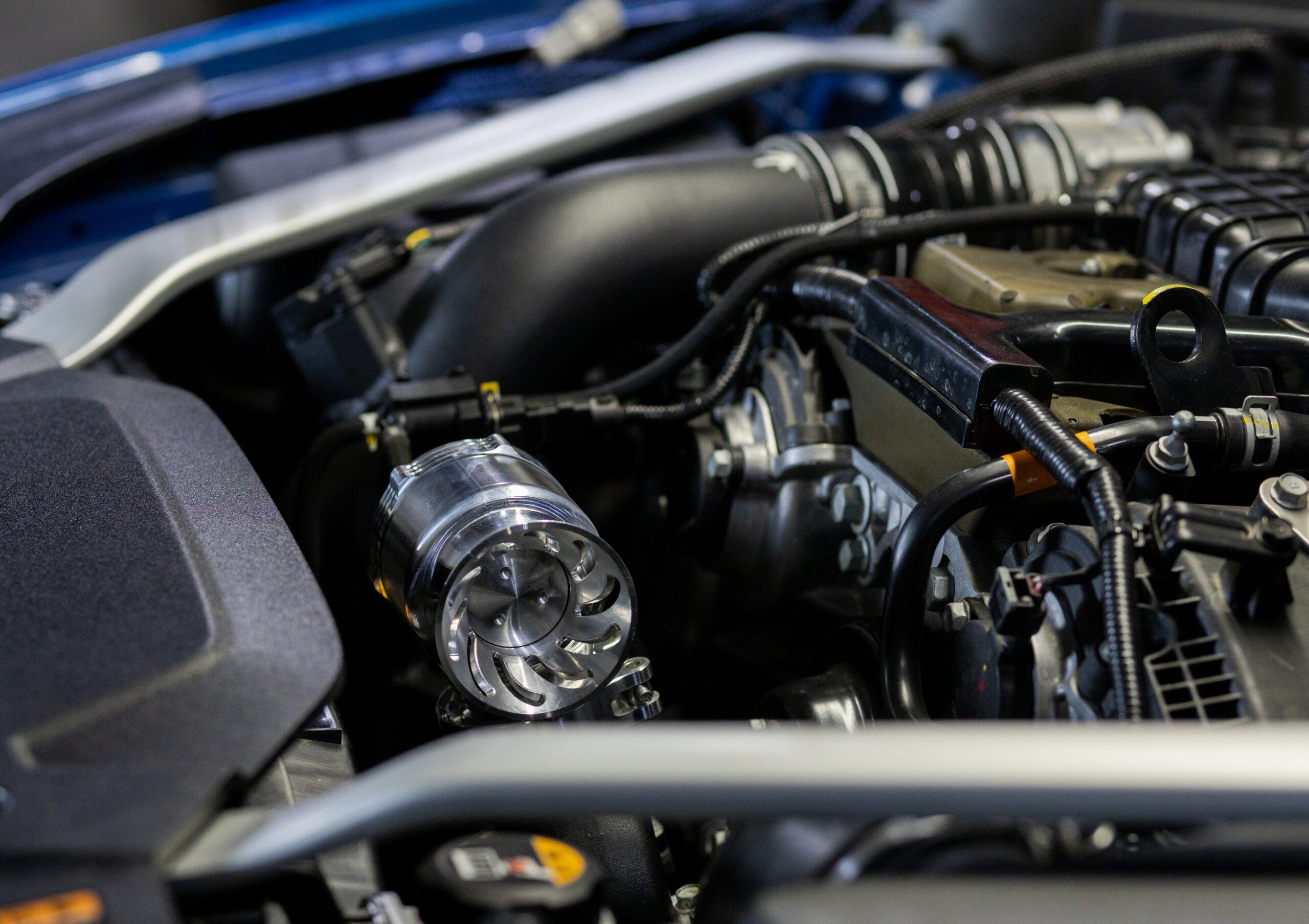
There's much more to the blow-off valve than just added volume to your turbocharged vehicle. However, even if you're only looking to give your car that extra hiss, it's still just as vital to select the correct valve for proper operation. For a deeper dive on some testing that we performed on the Stinger's blow-off valve system, and to see just how the sizing can affect the operation, check it out here. Thanks for reading and happy hissing!
Thanks for Reading!
-Nick




